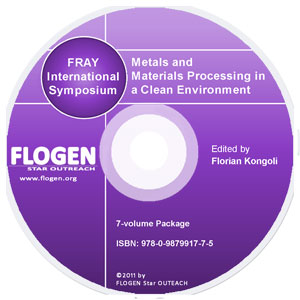
CD shopping page |
2011-Sustainable Industrial Processing Summit
|
| Editors: | Florian K |
| Publisher: | Flogen Star OUTREACH |
| Publication Year: | 2012 |
| Pages: | 708 pages |
| ISBN: | 978-0-9879917-1-3 |
| ISSN: | 2291-1227 (Metals and Materials Processing in a Clean Environment Series) |
Phase Regions With Two Allotropies Of Iron
Vasily Lutsyk1;1PHYSICAL PROBLEMS DEPARTMENT OF BSC RAS (SIBERIAN, Ulan-Ude, Russia;
Type of Paper: Regular
Id Paper: 116
Topic: 5
Abstract:
Phase diagrams (PD) computer models with kinematical and minimal surfaces are the effective devices for the different applied and fundamental tasks in the field of materials science and industrial practice [1]. Mathematical description of surfaces is based on the thermodynamic calculation of one-phase regions borders. Contour of the surface is used to imitate the soap film with the minimal area. T-x-y diagram construction begins with the spacious scheme of monovariant reactions. On this stage the F.Rhines’ comparing of liquidus with the shorthand writing of PD is to be enhanced by the analysis of subsolidus regions. When the surfaces of ruled type, as the borders of 3-phase regions (with the additive directive lines), are built, then the contours of 2-phase regions borders are constructed.As all geometrical elements of PD (points, curves, surfaces, regions) have been coded with the meaningful designation, it is convenient to decipher the experimental graphics and to enquire the errors. Vertical (for the given centre of masses) and horizontal (for the isopleth’s isotherm) material balances help to confirm the results of the microstructures design. A.Prince idea to visualize the 2-phase region with the iron allotropies by the plasticene is improved. In the transparent prism the set of one-phase, two-phase and three-phase regions of different colors, made on the software-ruled machine-bench, demonstrate the structure of PD.